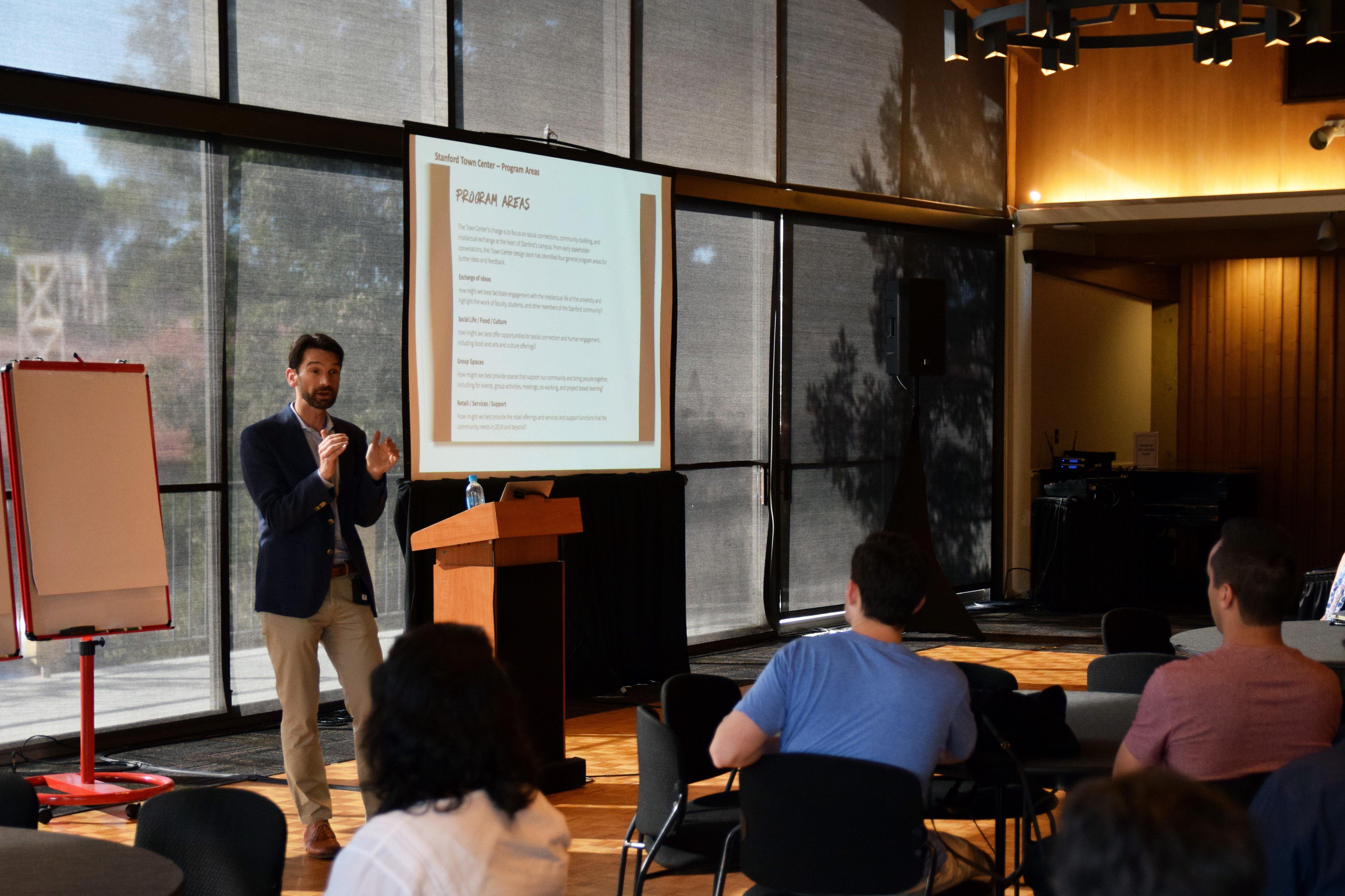While the ResX task force has planned a redesign of Stanford’s residential life around the idea that the campus would be divided into “neighborhoods” students would live in for four years, much of the details on how this will come into fruition have yet to be determined.
“There is no master implementation plan,” said Vice Provost for Student Affairs and ResX co-chair Susie Brubaker-Cole. “That’s something we’re going to be working on with a bunch of different people to design over the coming couple months.”
Brubaker-Cole refers to the set of implementation teams that, still being compiled, that will determine how to enact proposed changes surrounding Greek life, Row houses, student residential staff and staff training, and the “community councils,” that will govern each neighborhood. The University’s ongoing negotiations with Santa Clara County surrounding its 2018 General Use Permit (GUP) application — which would authorize construction of housing and academic buildings on Stanford land over the next 16 years — feedback from the Stanford community and adjustments to the plan deemed necessary with time will ultimately inform how the task force’s vision is realized.
The neighborhood concept, intended to be a guiding principle of the 25-year plan, aims to divide the campus into seven to 14 clusters of varying residence types that students would be assigned to before the start of their freshman year. Each neighborhood would contain a dining area, food service, a community commons and centralized programming, according to the task force’s final report, released April 16. A new housing assignment process in which priority is determined by class year rather than selected tier, will place students in new residences within their neighborhood each year.
“What it will look like for Stanford is what it kind of already looks like,” said Kamina Wilkerson ’18, one of two students who served on the task force. “For example, if we think of Lagunita [Court] or GovCo [(Governor’s Corner)] or [Gerhard] Casper Quad as a neighborhood, it makes more sense.”
However, a housing configuration in which each neighborhood contains, as laid out in the report, all-frosh dorms, upperclass dorms, a theme house, a co-op and independent (self-op or apartment style) residences demands changes to Stanford’s current layout. Residential clusters often contain multiple residences of the same type — such as the Row or Wilbur and Stern Halls — and some residence types are more common than others.
“We’re not really set up for that right now,” said former Associated Students of Stanford University (ASSU) President Shanta Katipamula ’19, who frequently met with task force members to provide ASSU input. “We only have one place that has apartments, in Mirrielees, and we only have one place that has suite style living, all the way out in Suites.”
Brubaker-Cole clarified that the creation of neighborhoods would require a combination of existing and new housing. Construction of new housing, however, is contingent on GUP approval.
“Yes, we want to build in relationship to the plans for going forward with ResX,” said Harry Elam, Vice Provost for Undergraduate Education and ResX co-chair. “But it’s all dependent on [the GUP].”
Under the GUP, Stanford plans to add 3,150 new housing units, or beds, for faculty, staff and students by 2035, with 1,700 intended for undergraduates. The GUP proposal does not outline specific construction plans for new dorms on campus.
How Greek houses would be integrated into neighborhoods is also is not detailed in the report, but in a May 3 meeting with leaders of Greek organizations on campus, Brubaker-Cole said the 10 Greek houses would be “lassoed into neighborhoods” at the discretion of an implementation team, according to one leader present at the meeting.
“Part of the reason they didn’t set a Greek life plan is because it differs from the rest of the ResX plan,” she said, referring to the part of the ResX report that recommends that students live in a designated theme house for only one year. “[Brubaker-Cole] wants to accommodate people who want to live in their house for more than one year, but that’s also up in the air.”
The power granted to implementation teams in moving forward with the ResX recommendations means some aspects of the report are subject to change.
“We’re making things for something 25 years in the future,” Wilkerson said. “We can’t foresee what five, 10 years in the future will hold, so what we tried to do in our final report is allow flexibility for it to change in the future.”
Some change has occurred even in the weeks following the report’s release. As part of what Katipamula described as a “listening tour,” that involved getting feedback from Resident Fellows and students, ResX chose to reevaluate their recommendation that 50 percent of residents of ethnic theme houses be freshmen.
Brubaker-Cole and Elam emphasized the changing nature of the plan, acknowledging, as Brubaker-Cole said, that there are “probably hundreds of unanswered questions.”
“We have a long way to go,” Elam said.
Emma Smith contributed to this report.
Contact Julia Ingram at jmingram ‘at’ stanford.edu.
